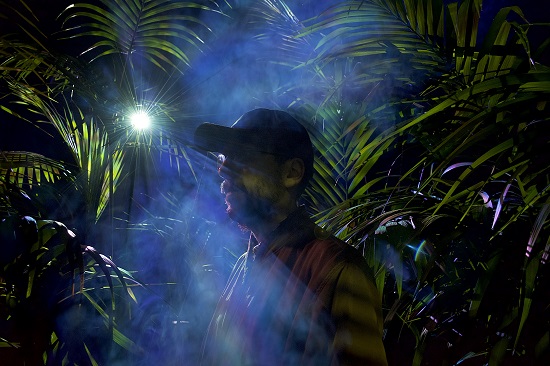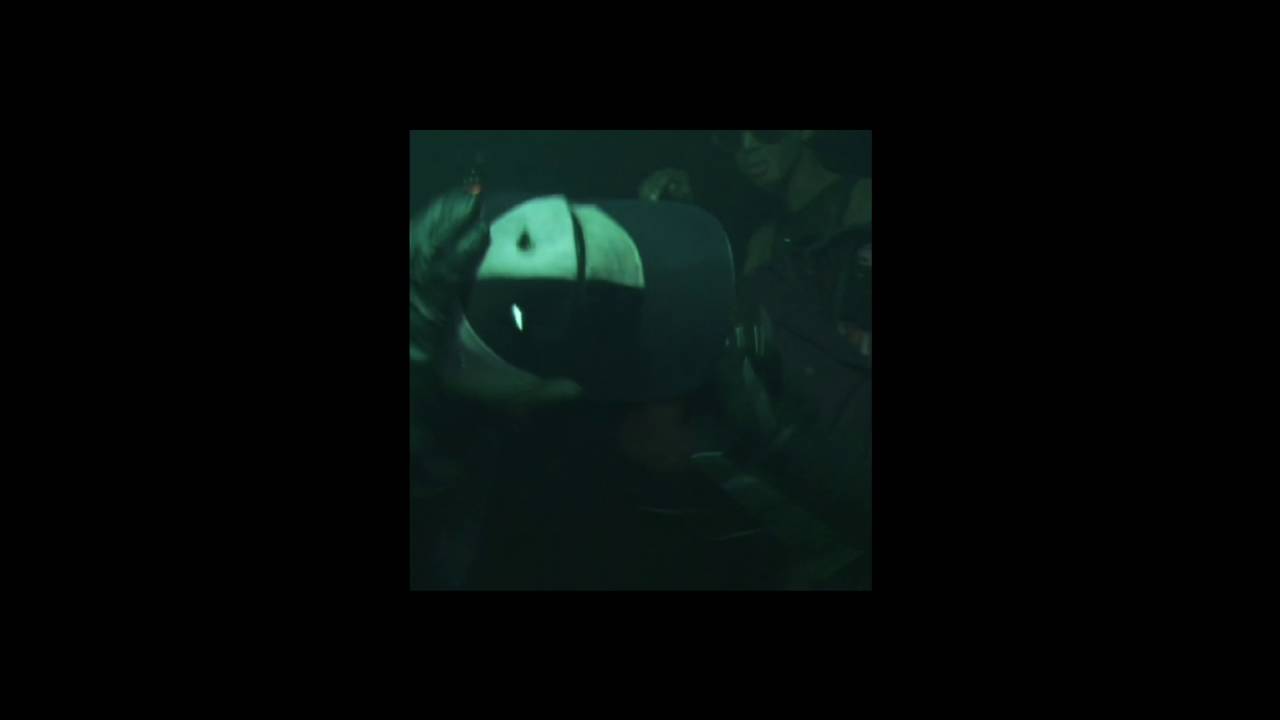This forthoming weekend, as part of the ever excellent Semibreve Fetival in Braga, Portugal, one of the country’s leading experimental musicians, Jonathan Uliel Saldanha, will be performing a live soundtrack to Tunnel Vision his collaborative film with director Raz Mesinai. Best know for his work with his band HHY and The Macumbas and duo Fujako , Jonathan is also a part of the Portugese art and music platform SOOPA, and has a film of his own in the pipeline. We asked Jonathan some questions about his upcoming performance, Portugal’s experimental music scene and the mysterious ‘Skull-Cave-Echo Effect’.
How did the idea of scoring Raz Mesinai’s Tunnel Vision come about?
From the moment we became good friends, we have recurrent themes of conversation: sub frequencies, Eastern and Asian music, science fiction, dub and tunnels. We share a synesthesic way of listening to sounds that tends to focus on a visceral level. Some of these conversations about resonant tunnels and sub bass eventually evolved into some sort of home made science fiction narratives and, in its own time, into the need of making film/video/music with these ideas. Tunnels became one giant stone organism breathing underneath the surface, a sound system for the fundamental vibrations that inhale through underground spaces.
We went to places that were very special and raw, tunnels and caves in and around Porto, like a deep Roman mine where we listened to the deepest tones and became mesmerised by the unfathomed figures they would project in our body and mind. These places became so important that I made some of the recording sessions for the soundtrack/album there; recording musicians and playing back the sounds and tones I recorded over and over back into the tunnel, getting everything contaminated by the acoustic body of those cavities, making the spaces talk through sound.
These kind of places became our sensory lexicon, a “cosmology of the cavity”, a set of body/skin experiences with temperature, pressure and vibration imprinted in the soundtrack and in film.
What do you have planned for your performance at Semibreve? Anything special or site specific?
For Semibreve I will perform a live dub of the sounds that inhabit the tunnel vision album, the site specific dimension is engraved into them not in the place of performance this time, even if I’m very much interested in working with the space proprieties. The sounds will be routed through my mixing board as if electric ghosts, bringing a distinct arquitecture to the space of performance. I will also include elements of my recent work, bringing unbodied voices and choir pieces into the mix.
You’ve done quite a different range of stuff. How does composing a soundtrack differ from what you do in HHY and the Macumbas, for example?
In terms of form, they are quite different, however, they’re intrinsically connected as all these projects share common ground. They’re both efforts on building a sonic world that has its own set of relations, a valid cosmology.
I have a long standing work relationship with a particular set of musicians, with whom I develop my specific interests on wind, percussion and voice. Whether I’m working with HHY & The Macumbas or with other projects, there are diagonal lines that continue to connect these different surfaces and layers.
For Tunnel Vision, I planed a series of recording sessions in different acoustic places, where I could explore some of recording techniques that I found relevant for capturing the ghosts trapped in the folds and cracks between the spaces and the sonic color of the instruments.
I worked with a group of people/musicians that were a clear influence on this soundtrack and that have triggered many options. Gustavo Costa and João Pais on percussion, Jessika Kenney, Catarina Miranda and Mike Ladd on the voice, Álvaro Almeida on horns and Rui Leal on bass.
Tell me about the recording process and the Skull-Cave-Echo effect. The name reminds me of the ‘Holophonic’ process that Psychic TV used to record Force The Hand Of Chance. Any relation?
There is not a direct relation with this, but I can see a resonant methodology.
The process places its focus on the psycho-acoustic effect and the protocols that unchain sound from its formal ambuscades and lets it remain a savage entity, vibrating through perception and finding a connection with the listener through the bones and flesh.
Skull-Cave-Echo is mostly a methodology, a process for triggering resonant manifolds, an end in itself. A filter/resonance method where sounds are embodied by a distinct acoustic cavity, and rooted through a mixer in a feedback system (a black box for input and output operations). Resonant brutalist architectures, animal/human skulls, tunnels and the inside of cavities were used as multidimensional echo chambers.


